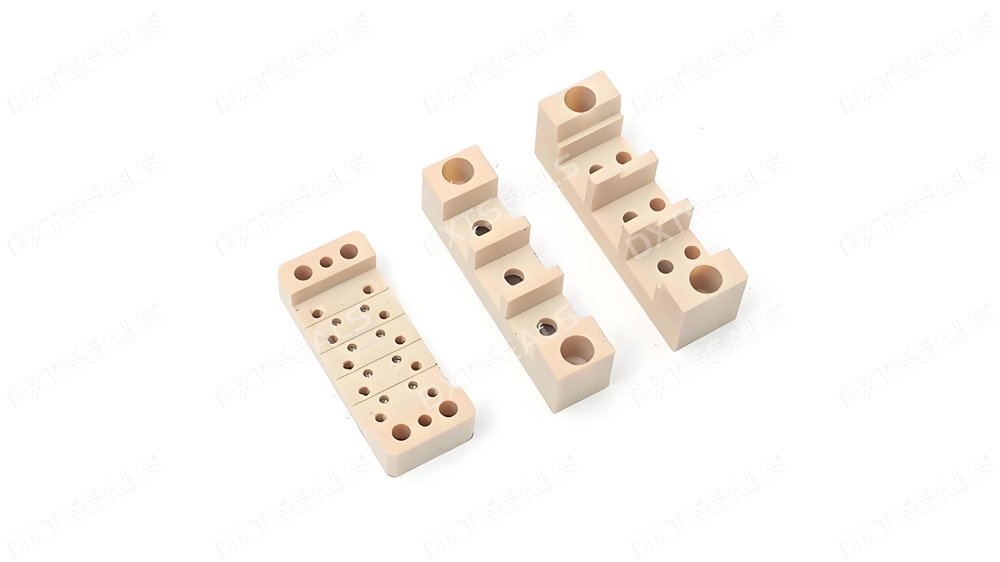
In the world of sealing technology, plastic materials are often preferred for their lightweight, chemical stability, and versatility. However, not all plastics are created equal—especially when used in demanding industrial environments where wear, corrosion, and pressure resistance are key.
This article by DXTSEALS offers a practical comparison of common plastic seal materials to help you make the best choice for your application.
🔍 Why Plastic Is Ideal for Sealing Applications
Plastic seals offer multiple benefits:
-
Low friction coefficients → ideal for dynamic applications
-
Resistance to many chemicals → long-term durability
-
Lightweight yet strong → suitable for compact or weight-sensitive equipment
-
Precision machining → perfect for custom designs via CNC
However, different plastics respond differently to abrasion, chemical exposure, and mechanical load.
🧪 Key Performance Factors: Wear, Corrosion, Pressure
Let’s break down the three most critical properties for seal materials:
1. Wear Resistance
Determines how well a seal can withstand friction in moving parts like shafts or pistons.
2. Corrosion Resistance
Essential when the seal is exposed to acids, solvents, or aggressive chemicals.
3. Pressure Resistance
Relates to the material’s ability to withstand high internal forces without deformation or failure.
📊 Material Comparison Table
| Material | Wear Resistance | Corrosion Resistance | Pressure Resistance | Remarks |
|---|---|---|---|---|
| PTFE | ★★★☆☆ | ★★★★★ | ★★☆☆☆ | Excellent chemical resistance; soft, requires backup ring |
| PEEK | ★★★★★ | ★★★★☆ | ★★★★★ | Best for high temp, high pressure, and dynamic loads |
| POM (Delrin) | ★★★★☆ | ★★★☆☆ | ★★★★☆ | Low cost, good dimensional stability |
| PA (Nylon) | ★★★☆☆ | ★★☆☆☆ | ★★★☆☆ | Moisture sensitive; good mechanical strength |
| UHMW-PE | ★★★★☆ | ★★★★☆ | ★★★☆☆ | Good for sliding applications; lower temp tolerance |
| PVDF | ★★★☆☆ | ★★★★★ | ★★★☆☆ | Excellent in acids and bases; moderate strength |
★★★★★ = Excellent; ★★★☆☆ = Moderate; ★☆☆☆☆ = Poor
📌 Application Scenarios
-
PEEK: High-performance sealing in hydraulic systems, compressors, oil & gas
-
PTFE: Preferred in chemical processing, food, and pharmaceuticals
-
POM: Good for low-to-medium pressure mechanical parts
-
UHMW-PE: Great for bulk material handling, piston wear rings
-
PVDF: Used in acidic and alkaline environments
-
Nylon (PA): Suitable for automotive and low-pressure hydraulic systems
🧠 Expert Tips for Material Selection
-
Match the material to your media: PTFE is ideal for chemical exposure, while PEEK is great under mechanical load.
-
Don’t compromise on backup support: Soft materials like PTFE need backup rings in high-pressure systems.
-
Always consider thermal expansion: Plastics expand more than metals—account for this in your design.
-
For dynamic sealing, prioritize wear resistance and low friction.
🏁 Conclusion
The right plastic sealing material ensures durability, reduces maintenance, and minimizes system failures. At DXTSEALS, we specialize in precision-machined seals and offer expert advice to help you choose the best material for your operating conditions.
📞 Contact DXTSEALS to discuss your project or request customized plastic seals tailored to your needs!
